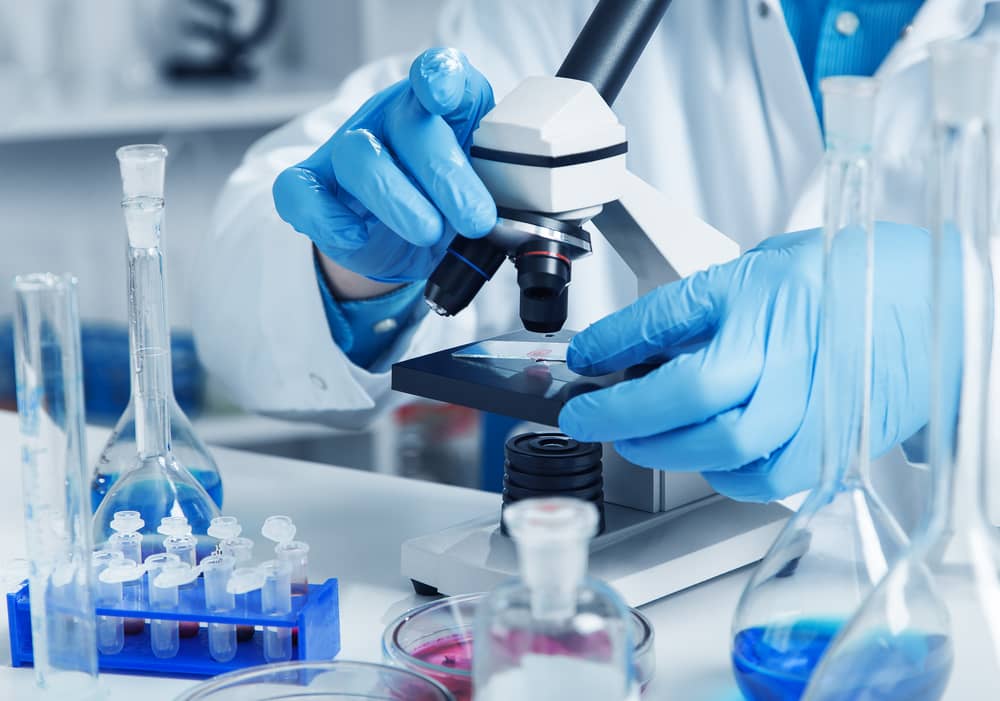Amyloidosis & Kidney Disease (original) (raw)
On this page:
- What is amyloidosis?
- What are the types of kidney-related amyloidosis?
- How common is kidney-related amyloidosis?
- Who is more likely to develop kidney-related amyloidosis?
- What are the complications of kidney-related amyloidosis?
- What are the symptoms of kidney-related amyloidosis?
- What causes kidney-related amyloidosis?
- How do health care professionals diagnose kidney-related amyloidosis?
- What tests do health care professionals use to diagnose kidney-related amyloidosis?
- How do health care professionals treat kidney-related amyloidosis?
- How do health care professionals treat complications of amyloidosis?
- Can I prevent amyloidosis?
- How does eating, diet, and nutrition affect amyloidosis?
- Clinical Trials for Amyloidosis & Kidney Disease
What is amyloidosis?
Amyloidosis is a rare disease that occurs when amyloid proteins are deposited in tissues and organs. Amyloid proteins are abnormal proteins the body cannot break down and recycle as it does with normal proteins. When amyloid proteins clump together, they form amyloid deposits. The buildup of these deposits damages organs and tissues.
Amyloidosis can affect different organs and tissues in different people, and it can affect more than one organ at the same time. The symptoms and severity of amyloidosis depend on which organs and tissues are affected. Amyloidosis most frequently affects the kidneys, heart, nervous system, liver, and gastrointestinal tract.
What are the types of kidney-related amyloidosis?
Four types of amyloidosis most often affect the kidneys.
- Immunoglobulin light-chain amyloidosis (AL amyloidosis), or primary amyloidosis, affects the kidneys in about 2 out of 3 people with this condition.1
- Amyloid A amyloidosis (AA amyloidosis), or secondary amyloidosis, is often associated with certain chronic inflammatory conditions.
- Leukocyte cell-derived chemotaxin 2 (LECT2) amyloidosis is a recently discovered form of amyloidosis that most often affects the kidneys and liver.
- Hereditary amyloidosis can be passed down from a parent to a child through rare gene mutations.
Some people with kidney failure may experience another type of amyloidosis, known as dialysis-related amyloidosis. This type can affect people receiving dialysis treatment—either hemodialysis or peritoneal dialysis—to treat kidney failure. Dialysis-related amyloidosis causes amyloid proteins to build up in bones, joints, and tendons.
How common is kidney-related amyloidosis?
Amyloidosis is rare. AL amyloidosis is the most common type of amyloidosis in the United States, and it affects approximately 40 out of every 1 million Americans.2 The other types of amyloidosis are even less common.
Who is more likely to develop kidney-related amyloidosis?
The risk factors for kidney-related amyloidosis depend on the type of amyloidosis.
AL amyloidosis
AL amyloidosis is most common in people over the age of 65, and the risk of developing AL amyloidosis increases as you get older.2
AA amyloidosis
AA amyloidosis is most common in people who have experienced a long-lasting infection or chronic inflammatory disorder.
LECT2 amyloidosis
LECT2 amyloidosis is most common in Hispanic adults, particularly those of Mexican descent.
Hereditary amyloidosis
Hereditary amyloidosis is more common in people who have a family member with the condition.
Dialysis-related amyloidosis
Risk of developing dialysis-related amyloidosis increases the longer you have been on dialysis, the older you are at the start of dialysis treatment, and the more your kidney function has declined.3
What are the complications of kidney-related amyloidosis?
Amyloid that builds up in the kidneys can damage the kidneys and affect the kidneys’ ability to filter blood. This damage can cause wastes to build up in your body, which may worsen kidney damage and lead to kidney failure.
What are the symptoms of kidney-related amyloidosis?
When amyloidosis affects your kidneys, the most common symptom is nephrotic syndrome—a group of symptoms that indicate kidney damage. These symptoms include
- too much protein in your urine
- low levels of protein in your blood
- swelling in parts of your body
- high levels of cholesterol and other fats in your blood
Other signs and symptoms of amyloidosis may include
- anemia
- fatigue or tiredness
- inflammation in the hands or numbness, tingling, or burning sensation in the hands or feet
- low blood pressure
- shortness of breath
- weight loss
When amyloidosis affects your bones, joints, and tendons—as it does in dialysis-related amyloidosis—symptoms may include
- bone cysts
- carpal tunnel syndrome
- joint pain or stiffness
 There are many different symptoms associated with amyloidosis. Talk with your health care professional about all the symptoms you are experiencing.
There are many different symptoms associated with amyloidosis. Talk with your health care professional about all the symptoms you are experiencing.
What causes kidney-related amyloidosis?
Amyloidosis is caused by an abnormal folding of proteins. These proteins can clump together and form amyloid deposits. The deposits collect in organs and tissues and may lead to organ damage and health problems, including kidney disease. Experts have identified more than 30 different proteins that can form amyloid.4
AL amyloidosis
Plasma cells—a type of blood cell made by stem cells in your bone marrow—can produce abnormal proteins that cannot hold their shape. These abnormal proteins clump together, causing AL amyloidosis.
AA amyloidosis
Long-lasting infections or chronic inflammatory conditions such as rheumatoid arthritis, inflammatory bowel disease, familial Mediterranean fever, and tuberculosis can trigger a protein to build up and cause AA amyloidosis.
LECT2 amyloidosis
Researchers do not know exactly what causes the LECT2 protein to form amyloid.
Hereditary amyloidosis
Genetic mutations passed down in families can cause your body—most often, your liver—to produce amyloid proteins. The amyloid proteins collect in certain parts of your body, such as the kidneys, and cause damage. There are many different types of hereditary amyloidosis, each associated with a different gene mutation and type of protein.
Dialysis-related amyloidosis
Dialysis doesn’t remove enough of a protein called beta-2 microglobulin from the blood. Over time, this protein can build up and deposit in bones, joints, and tendons, leading to dialysis-related amyloidosis.
How do health care professionals diagnose kidney-related amyloidosis?
Health care professionals use your medical and family history, a physical exam, and one or more tests to confirm your diagnosis of amyloidosis, identify the type of amyloidosis, and determine treatment.
What tests do health care professionals use to diagnose kidney-related amyloidosis?
Your health care professional may use one or more of the following tests to diagnose amyloidosis.
Lab tests
- Urinalysis is used to look for amyloid proteins in the urine and to check for kidney damage.
- Blood tests are used to look for amyloid proteins in the blood and to check how well your kidneys are working.
- A kidney biopsy may be performed to look for amyloid deposits in kidney tissue and help identify the type of amyloidosis.
Depending on your symptoms, your health care professional may suggest other lab tests.
Imaging tests
Health care professionals may use imaging tests to check for signs of dialysis-related amyloidosis, such as bone cysts, bone lesions, and amyloid deposits in or between bones, joints, tendons, and ligaments.
- X-rays use a small amount of radiation to create pictures of the inside of your body.
- Computed tomography (CT) scans use a combination of x-rays and computer technology to create images of the inside of your body.
- Magnetic resonance imaging (MRI) uses a magnetic field and radio waves—without radiation—to make pictures of your organs and soft tissues inside your body.
- Ultrasounds use sound waves to look at structures inside your body.
Genetic tests
Genetic testing can be used to look for specific gene mutations that are known to cause amyloidosis. Your health care professional may use genetic testing to help identify the type of amyloidosis you have.
 A biopsy—which involves examining tissues or cells from the body under a microscope—is used to confirm the diagnosis of amyloidosis and help determine the type of amyloidosis.
A biopsy—which involves examining tissues or cells from the body under a microscope—is used to confirm the diagnosis of amyloidosis and help determine the type of amyloidosis.
How do health care professionals treat kidney-related amyloidosis?
Treatment for amyloidosis varies, depending on the type of amyloidosis you have. Your treatment will focus on slowing the production of amyloid and treating the symptoms of organ damage.
Treatments for amyloidosis can ease your symptoms and improve your quality of life, but there is no cure for the condition.
AL amyloidosis
Treatment for AL amyloidosis focuses on destroying the abnormal cells responsible for forming amyloid proteins.
Chemotherapy treatment. Your health care team may prescribe one or more of the following medicines—in some cases, the entire four-drug combination—to help slow or stop the growth of abnormal cells
Autologous stem-cell transplant. An autologous stem-cell transplant uses your body’s healthy stem cells to replace your damaged stem cells. The healthy stem cells are removed from your blood and stored while you receive chemotherapy treatment to destroy the abnormal stem cells. The healthy stem cells are then put back into your body.
AA amyloidosis
Health care professionals treat AA amyloidosis by treating the underlying chronic inflammatory condition that is causing amyloid buildup in your body.
Medicines. Your health care professional may prescribe medicines to decrease inflammation, including
- biologic agents, such as tumor necrosis factor blockers
- monoclonal antibodies
- corticosteroids
- nonsteroidal anti-inflammatory drugs (NSAIDs)
- dietary supplements, such as fish oil
Your health care professional may prescribe antibiotics to help fight infection.
LECT2 amyloidosis
Researchers have not found a way to treat LECT2 amyloidosis, but your health care professional may suggest treatments to control your kidney disease and ease symptoms.
Dialysis-related amyloidosis
Treatment for dialysis-related amyloidosis focuses on reducing the levels of amyloid in the blood so less amyloid is deposited in organ tissues.
Kidney transplant. A working transplanted kidney does a better job of preventing amyloid proteins from building up in the blood than dialysis treatment. Some people with kidney failure may be able to have a kidney transplant. However, a kidney transplant isn’t for everyone.
Hereditary amyloidosis
Treatment for hereditary amyloidosis focuses on slowing or stopping the production of amyloid. The amyloid protein that causes hereditary amyloidosis is most often produced in the liver. The amyloid is then deposited in other parts of the body, such as the kidneys, heart, and nerves.
Liver transplant. Surgery to remove a diseased liver and replace it with a healthy liver may slow down or stop the progression of amyloidosis. However, a liver transplant isn’t for everyone. Talk with your health care professional about whether a liver transplant is right for you.
How do health care professionals treat complications of amyloidosis?
Your health care professional may suggest one or more of the following treatments to help control your kidney disease and ease your symptoms.
Medicines. Medicines to manage your kidney disease can help you feel better.
- Angiotensin-converting enzyme (ACE) inhibitors or angiotensin receptor blockers (ARBs) can lower your blood pressure and slow the progression of kidney disease.
- Diuretics help the kidneys remove fluid from the blood and reduce swelling in your body.
- Iron supplements and erythropoiesis-stimulating agents can help your body make more red blood cells and improve anemia.
Kidney replacement therapy. When amyloid builds up in the kidneys, the kidneys may become so damaged they fail. If your kidneys fail, you may consider kidney replacement therapy—hemodialysis, peritoneal dialysis, or a kidney transplant—to help you feel better and live longer.
Surgery. Your health care professional may suggest surgery to reduce pain and allow your joints to work better. Surgery can also be used to remove tumors or tissue damaged by amyloid deposits.
Supportive care. Your health care team may suggest healthy ways to manage stress, such as staying physically active, getting enough sleep, and talking about your feelings with family, friends, or a health care professional.
 You can manage stress by staying physically active, getting enough sleep, and talking about your feelings and challenges.
You can manage stress by staying physically active, getting enough sleep, and talking about your feelings and challenges.
Can I prevent amyloidosis?
Most types of amyloidosis are not preventable, but managing your kidney disease may help you delay or avoid kidney failure.
You may be able to prevent AA amyloidosis if your chronic inflammatory condition is treated early and the inflammation is kept under control. If you have familial Mediterranean fever, your health care professional may use a medicine called colchicine to treat the inflammation and help prevent AA amyloidosis from developing.
How does eating, diet, and nutrition affect amyloidosis?
Eating, diet, and nutrition have not been shown to play a role in preventing or treating amyloidosis. However, if your kidneys are damaged, you may need to change what you eat to manage your kidney disease. For example, people with kidney disease should limit the amounts of protein, sodium, and phosphorus in their diets. Work with your health care professional or a registered dietitian to develop a meal plan that includes foods you enjoy eating while maintaining your kidney health.
Clinical Trials for Amyloidosis & Kidney Disease
The NIDDK conducts and supports clinical trials in many diseases and conditions, including kidney disease. The trials look to find new ways to prevent, detect, or treat disease and improve quality of life.
What are clinical trials for amyloidosis and kidney disease?
Clinical trials—and other types of clinical studies—are part of medical research and involve people like you. When you volunteer to take part in a clinical study, you help health care professionals and researchers learn more about disease and improve health care for people in the future.
Researchers are studying many aspects of amyloidosis and kidney disease, such as
- new medicines to prevent the decline of kidney function in people with amyloidosis
- the effectiveness of different imaging techniques in detecting amyloidosis
- the safety and efficacy of new treatments for amyloidosis
Find out if clinical studies are right for you.
Watch a video of NIDDK Director Dr. Griffin P. Rodgers explaining the importance of participating in clinical trials.
What clinical studies for amyloidosis are looking for participants?
You can view a filtered list of clinical studies on amyloidosis that are open and recruiting at
www.ClinicalTrials.gov. You can expand or narrow the list to include clinical studies from industry, universities, and individuals; however, the NIH does not review these studies and cannot ensure they are safe. Always talk with your health care provider before you participate in a clinical study.